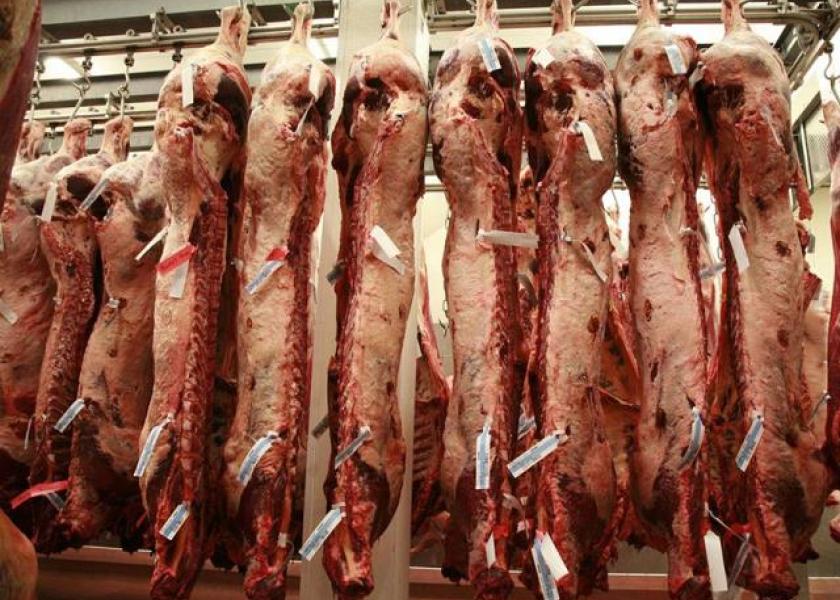Cattle Outlook: Beef Cold Storage Down

By: Ron Plain and Scott Brown, University of Missouri
There were 467 million pounds of beef in cold storage at the end of March. That was 5% less than the month before and 3% less than a year earlier. The amount of pork in cold storage at the end of March was down 8.7% year-over-year, but frozen chicken stocks were up 4.6%
USDA's annual publication, Meat Animals Production, Distribution, and Income, says U.S. cash receipts from cattle sales totaled $78.2 billion dollars last year. That was down $3.2 billion from the 2014 record. Five states had more than four billion dollars in sales in 2015: Nebraska, Texas, Kansas, Iowa and Colorado. At $12.5 billion, Nebraska had a billion dollars more in cash receipts than number two Texas. Missouri ranked ninth at $2.1 billion in cash receipts from cattle sales.
Compared to a year ago, there were 1.3% fewer steers on feed at the start of April, but 4.5% more heifers on feed. This is the first year-over-year increase in the number of heifers being fed since July 2012. It is an indication that the growth in the cow herd may be starting to slow.
Beef cutout values are sharply lower this week. This morning the choice boxed beef cutout value was $212.05/cwt, down $8.45 from the previous Friday and down $42.45 from a year ago. The select carcass cutout this morning was $203.17/cwt, down $8.39 from last week and down $39.21 from a year ago.
Fed cattle prices were lower this week in heavy volume. Through Thursday, the 5-area average price for slaughter steers sold on a live weight basis was $123.87/cwt, down $1.71 from last week's average and down $35.30 from a year ago. The 5-area dressed steer price averaged $194.50/cwt, down $10.86 from the week before and down $59.40 from a year ago.
This week's cattle slaughter totaled 590,000 head, up 0.5% from last week and up 4.6% from a year ago. The average steer dressed weight for the week ending on April 16 was 878 pounds, down 2 pounds from the week before, but up 6 pounds from a year ago. This was the 96th consecutive week with steer weights above the year-ago level.
Prices for feeder cattle this week at the Oklahoma City Stockyards were $1 to $4 lower compared to last week. Calves were steady to $3 lower. Prices for medium and large frame #1 steers by weight group were: 400-450# $186.50-$198.50, 450-500# $179.50-$190, 500-550# $157-$183, 550-600# $163-$182, 600-650# $145-$176.50, 650-700# $164-$167.50, 700-750# $141.50-$153.50, 750-800# $137.50-$145.75, 800-900# $130-$143.75 and 900-1000# $120-$133/cwt.
Today, the April live cattle futures contract settled at $123.10/cwt, down $1.62 for the week. June fed cattle settled at $114.92/cwt, up 27 cents from the previous Friday. The August contract ended the week at $112.42/cwt, up 87 cents from the previous Friday. May feeder cattle ended the week at $140.42/cwt, down $2.03 from a week earlier. August futures lost $1.73 this week to close at $140.37/cwt.







